The 8 Most Important Marketing Strategies for a Healthcare Practice – Part 1
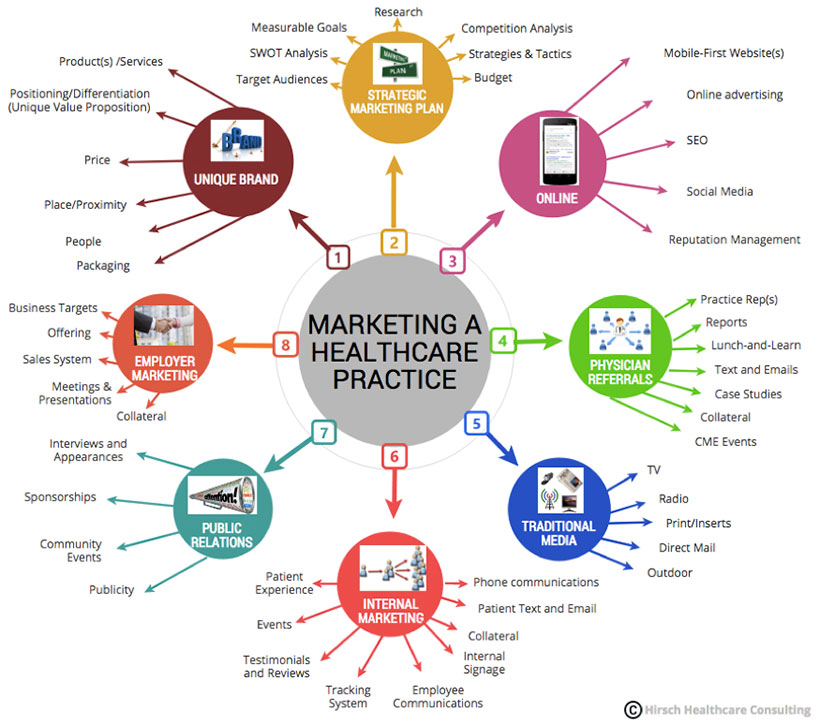
In today’s busy, complicated, information-overload, short-attention-span environment, there are hundreds of ways to market a healthcare practice but there are really 8 most important marketing strategies for most healthcare practices to consider.
Each of these 8 strategies includes a host of possible communication tactics. To simplify and organize these strategies and tactics, I have created the infographic featured at the top of this article.
Here is a brief summary of each of the strategies illustrated.
Unique Brand
People have so many options today for healthcare services and providers that the only way healthcare practices can truly stand out from the pack of lookalikes is to establish a well-differentiated, memorable and unique value proposition.
The same issue applies to choices available to referring physicians (where applicable).
In evaluating your existing value proposition or in developing a new unique value proposition for a new practice or as part of a rebranding strategy, you need to identify the one thing (above all else) that you want patients to think of and remember about you if they can only remember one thing. (You are lucky if they remember anything about you, much less multiple advantages you offer.)
That “one thing” needs to really matter to your patient in deciding whether to choose you or a competitor. You can be unique but unless your uniqueness is a highly relevant value to your patient, you won’t have a meaningful brand.

A successful value proposition needs to have these characteristics:
- True/Accurate
- Different/Better Value compared to competitors
- Meaningful to Your Target Audience
- Memorable/Easy to remember
- Difficult for your competitors to match or “clone”
Some well-known brand examples:
Starbucks – Coffee as an Experience
Apple – Coolness
Southwest Airlines – The Airline with a Heart
Target – Expect More, Pay Less
Walmart – Save Money. Live Better
Thumbtack – Consider It Done
Dollar Shave Club – A Great Shave for a Few Bucks a Month
Kaiser Permanente – Healthy Care (“THRIVE”)
Your brand is a reflection of your desired reputation and your reputation is, ultimately, your brand. A brand should under-promise and over-deliver.
You and everyone else in your organization is a living, breathing representative and reflection of your brand. The value of your brand is only as good as your commitment and ability to walk your talk – every day in every way.
A healthcare practice brand encompasses the entire patient experience. It is far more than a logo or a website or an ad or any of the elements that may be tools for communication of the value of the brand.
Relevant Branding Statistics
Only 1 in 4 corporate brands appear to their target audiences as differentiated from competitors. CEB Global
According to the Harvard Business Review, 64% of consumers site “authentic shared values” as the primary influence for their relationship with a brand. Harvard Business Review
Yet “personal benefits” – focusing on how the brand helps a stakeholder achieve their goals or present themselves as the person they want to be – is shown to be 3 times more effective at increasing brand outcomes compared to the “authentic shared values” approach. CEB Global
Americans say that they tell an average of 16 people about poor brand experiences compared to an average of 9 people with whom they share positive brand experiences American Express Survey
How to Develop (or Redevelop) Your Healthcare Brand
1. Define Your Target Audience(s)

Who do you want, and just as important, who don’t you want? Be specific.
Examples:
- Women, age 35-64, who are experiencing pelvic pain
- Men and Women, age 40-60, acting as caregivers for their aging parents
- Baby Boomers experiencing hearing loss
- Men and Women age 30 – 64 with Anthem Blue Cross insurance
2. Clarify Your Brand Mission Statement
What is your reason to exist and how do you provide value to your customers in a way that is different than your competitors?
Examples:

Amazon
“To be Earth’s most customer-centric company where people can find and discover anything they want to buy online.”

Facebook
“To give people the power to build community and bring the world closer together.”

Google
“To organize the world’s information and make it universally accessible and useful.”

Kaiser Permanente
“To provide high-quality, affordable health care services and to improve the health of our members and the communities we serve.

Mayo Clinic
“To inspire hope and contribute to health and well-being by providing the best care to every patient through integrated clinical practice, education and research.”

MD Anderson Cancer Center
“To eliminate cancer in Texas, the nation and the world through exceptional programs that integrate patient care, research and prevention.”

Starbucks
“To inspire and nurture the human spirit – one person, one cup and one neighborhood at a time.”
3. Research Your Competitors’ Brands

Focus on your primary and most direct competition. Identify their brand strengths as well as weaknesses and vulnerabilities.
Learn everything you can about how they define and communicate their brand value so that you can compare, contrast and differentiate your brand in the manner most likely to be perceived as more valuable to your target audience(s).
4. Identify Your Brand Benefits and Primary Characteristics

What recognizable and marketable benefits do your patients and other constituencies (including referring physicians) gain from their relationship with your brand?
What are your brand’s tangible, unbiased and measurable characteristics?
What psychological rewards or emotional benefits do your patients, referral sources and employees get as a result of their interactions with your brand?
How do you define value for your typical recurring patient and for your referring physicians (if applicable)?
5. Determine Your Unique, Differentiated Value Proposition

Why should your desired patient come to you rather than anyone else?
What do you do better than your competitors?
What other characteristics, products, services, patient experiences or other value make you different (and better)?
What are the common characteristics of strong value propositions?
- Easy to understand and to remember
- Effectively communicates tangible results your patients will get
- Makes clear how you are different and better than your competitors
- Doesn’t overpromise with obvious hype
6. Chart Your Ideal Patient Experience
Healthcare practices are service businesses. Your brand reputation will ultimately be based on the perceptions of your patients and referrers regarding the quality and outcomes of the patient experience.
If you don’t have a clear vision of what the ideal patient experience in your practice should be, there is no way for you to achieve it.
A good place to start is to “map” your patient journey for the typical and for the atypical patient.
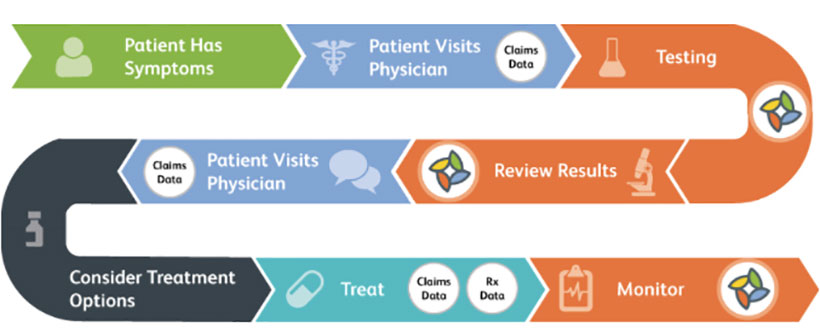
For each step on the patient journey, you then define the optimal patient experience. Once you have determined that for each step in the patient journey, you can see the overarching value of the patient’s total experience with you.
This process allows you to craft the ideal patient experience along every step of their journey.
7. Establish Your Brand Standards and Guidelines

This is the set of rules that defines how your brand works and how your brand value is communicated. Think of this as the owner’s manual for your brand.
The form that this takes in most businesses is encapsulated into what is referred to as the “brand book” or “brand identity guide” or “brand style guide” or even “brand bible.”
The brand book should include visual style guidelines (logo, typography, imagery) as well as content guidelines and brand “talking points.”
All brand communications must then be based on and conform to the brand standards and guidelines to provide consistency across all communications platforms and environments.
Here’s a great example from the Boy Scouts of America: Boy Scouts of America Brand Identity Guide
8. Live Your Brand (Every Day in Every Way)

A brand is not your logo or your style guide. Ultimately, a brand is the total of all experiences your customers have with you.
Successful brands also require consistency. With Starbucks or Southwest Airlines, to name two examples, you know what to expect and what you will get in your experience with these brands regardless of where and when you engage with them.
You and everyone else in your organization must understand and buy in to the brand so they “walk your talk” every day in every way. This starts with the phone experience and continues with the appointment/encounter and also includes communication after the encounter and between encounters.
Everyone in your organization must be a positive brand ambassador. If you don’t have that commitment, your brand reputation will inevitably suffer.
9. Create Brand Advocates

In addition to everyone within the organization, strong brands develop customer advocates who feel compelled to share with others their positive experiences with your brand. You might think of your advocates as “raving fans” or “missionaries” or “ambassadors” who are emotionally invested in your value and, correspondingly, your success.
You can’t expect to create these kinds of advocates without providing superior patient experiences on a consistent basis. You have to earn your advocates. In fact, you have to earn the right to even encourage their advocacy.
Every customer ambassador is worth many times more than their weight in gold and those relationships must be protected and nurtured carefully and never taken for granted.
10. Never Stop Evolving and Communicating Your Brand Value

Brands are not static. They are living, “breathing” organisms. Just as your practice must evolve to continue to be competitive and valuable, so must your brand. Branding is never “done.”
Your core brand promise may not change, but characteristics and benefits will and should evolve.
Here’s a good example of brand evolution: The Evolution of Starbucks
Strategic Marketing Plan
You’ve no doubt heard the saying that originated with French writer Antoine de Saint-Exupery: “A goal without a plan is just a wish.” Truer words were never spoken and they apply as much to success in marketing as in any other endeavor.
Marketing is a business strategy and must be planned as such. Otherwise, you are just shooting blindly in the dark at a target you can’t even see, much less aim at with any accuracy.

Elements of a Strategic Marketing Plan
- Measurable (quantifiable) goals
- SWOT analysis (Strengths, Weaknesses, Opportunities, Threats)
- Target Audience analysis and priorities
- Competition analysis
- Prioritized services, procedures and products
- Pricing and packaging strategy
- Unique Value Proposition
- Patient Journey analysis
- Branding strategy and tactics
- Internet marketing strategy and tactics
- Website(s) analysis
- Online advertising strategy and tactics
- SEO strategy and tactics
- Social media strategy and tactics
- Online reputation strategy and tactics (patient reviews)
- Physician Referral marketing strategy and tactics (if applicable)
- Internal marketing/Patient experience strategy and tactics (to patients and to practice employees)
- Traditional media advertising strategy and tactics (if applicable)
- Community marketing/networking strategy and tactics
- Publicity strategy and tactics
- Employer marketing strategy and tactics (if applicable)
- Marketing Budget analysis and recommendations
- Tracking system and methodology
Measurable Goals

All strategic marketing plans require specific, quantifiable goals over a predetermined period of time (usually one year).
Numbers don’t lie and marketing is designed (or should be) to produce profitable, measurable growth.
The first thing you want to do in the process of setting measurable goals is review your baseline of recent year-over-year growth (or decline) for the past two years. Changes in healthcare are happening so fast that there is almost no value in comparing data from more than two years ago.
Healthcare practices can establish quantifiable goals in the following categories. Your practice may choose to set multiple targets from the list below.
- Total new revenue tracked to the positive performance of the plan
- Number of new patients
- Patient retention percentage
- Additional number of procedures above trend line
- Additional products sold above trend line
- Revenue from newly introduced services or products
- Increase of X number of positive online patient reviews
- Decrease of X number of negative online patient reviews
- Number of referrals from each referring physician
- Number of new referring physicians
- Number of specific case types
- Number of procedures (by type)
- Number of products sold (by product)
- Number of visitors to website(s)
- Number of visitors to specific landing pages
- Number of additional social media followers
- First page organic ranking for specific keywords
- Number of calls and/or landing page visits in response to advertising (by advertising source)
Be careful about defining too many quantifiable goals but set goals based on what type of growth you want to measure.
Here’s a detailed marketing case study about one of the most aggressive marketing organizations in healthcare: Cancer Treatment Centers of America
SWOT Analysis
Strengths, Weaknesses, Opportunities, and Threats pertaining to any company will continually evolve over time. For that reason, it’s important for you to do an updated SWOT analysis of your practice every year as part of the marketing planning process.
Here is an example of a SWOT analysis for a healthcare practice.
SWOT ANALYSIS
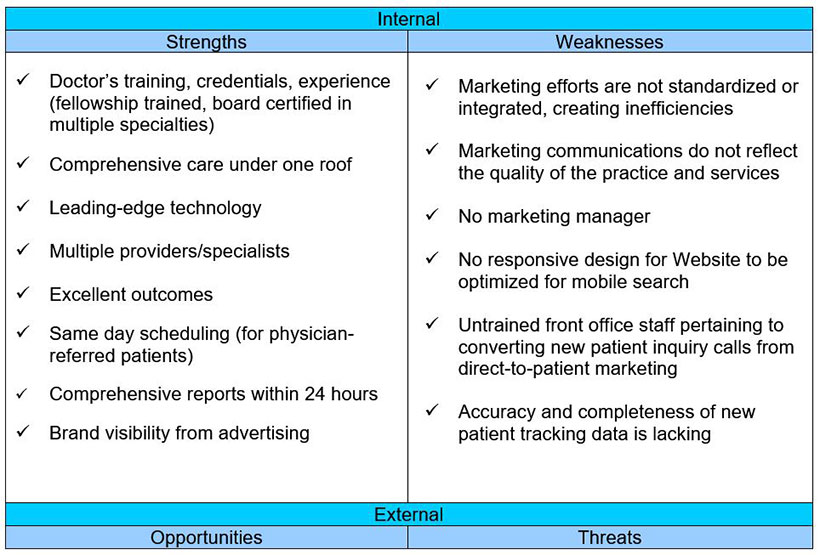
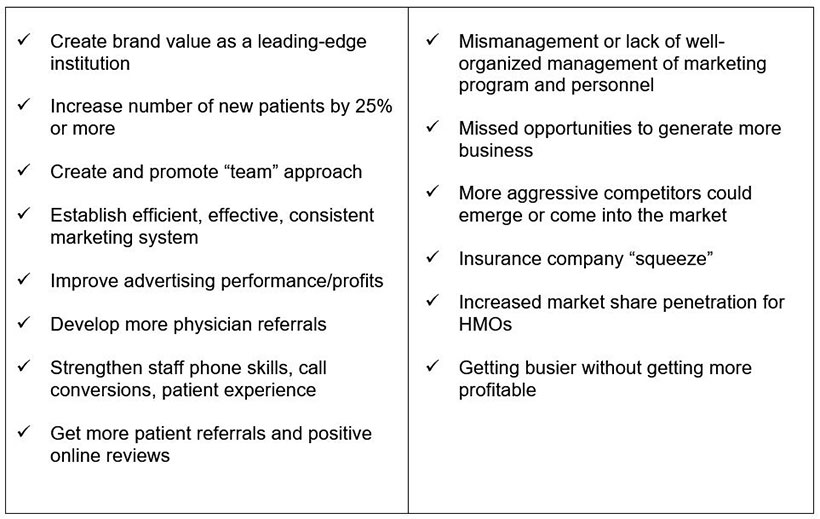
Target Audience Analysis and Priorities

People want to believe that they are making the best choice for them when it comes to accessing healthcare. If they can “see” themselves in your targeting and messaging, they are more likely to respond to your marketing.
The more specific you can be in identifying and prioritizing your desired target audiences, the greater chance you will of connecting with and attracting that audience.
The two examples below are from pharmaceutical companies. Healthcare practices could learn a lot from studying these examples. If these companies can generate business while being legally required to devote a lot of time in each commercial to listing all of the possible negative side effects and other risks associated with their drug, a healthcare practice can certainly find a way to connect with specific target audiences.
Examples:
Men age 40+ who have or think they may have low testosterone
TV Spot: Axiron TV Commercial
Women with Irritable Bowel Syndrome: TV Spot: Xifaxan TV Spot
There are many ways to target specific audiences:
- Google AdWords for specific condition keywords
- Facebook “sponsored posts” (newsfeed ads) targeting specific demographic and geographic user profiles
- Optimized articles and blog posts
- Target audience-focused landing pages on your website
- Patient testimonials (video preferred, otherwise written)
- TV ads
- Radio ads
- Print ads
- Billboards
- Community talks
- Marketing to referring physicians (literature, case studies, etc.)
- Employer marketing
- Publicity opportunities (featured story in print, radio or TV)
- Patient advocates (raving fans) who fit the audience profile you want
Competition Analysis

If you want to win more of your preferred patients, you need to understand what your competitors are doing in order to positively differentiate your value as a more desirable choice for your target audience.
How can you find competitive information?
- Competitor’s website
- Google search for competitor’s name
- Online patient review sites, plus Google user reviews
- Competitor’s ads (if they advertise)
- Focus groups of consumers in the market who fit your target audience profile
- Surveying your employees for what they may know about competitors
- Interviewing former employees of competitors when they are job hunting (LinkedIn is a great tool for this)
- Secret shopping the competitor’s practice (phone and/or in-person)
- Talk to sales reps who visit your practice as well as practices of your competitors (some won’t talk, others will)
Prioritize services, procedures, products

Begin with the end in mind, as the late, great Stephen Covey wrote about in his best-selling The Seven Habits of Highly Effective People.
Step 1: Evaluate your current volume and mix of your services, procedures and products to establish your baseline. Then prioritize your desired mix and compare to your baseline.
Sometimes, it’s difficult to decide on priorities because you may have many areas of opportunity. But it’s better to do a few things well than many things poorly because you are trying to do too much. Deeper and narrower focus is more productive and profitable than shallower and wider.
This doesn’t mean you can only pick one thing. Just don’t pick 20 of equal, competing priority.
Step 2: Once you have identified and ranked your highest priorities and mix of services, procedures and products, develop a specific marketing campaign for each, utilizing the communications channels listed in the previous “Target Audience” section.
Pricing and Packaging
Pricing is an increasingly important strategy for healthcare practices, even for insurance-based practices. The increase in the number of Americans with high-deductible health plans continues to grow rapidly.
As a result, more patients are asking pricing questions and making decisions based on a variety of cost factors as well as medical considerations.

Here are steps in the process of creating an effective pricing strategy.
- Price-shop your competition.
If it is an insurance-based competitor, ask questions about out-of-pocket cost as a prospective patient with a high-deductible plan.
If it is a cash-based practice, ask about costs for what are likely to be their most expensive and least expensive services. “What are my options?”
- Decide if you need to adjust your pricing within your legal discretion, based on pricing competitively.
- Make sure your staff knows what visits, procedures, services and products cost in your practice for people who have to pay out-of-pocket
- Decide whether you can and will offer cash discounts for patients and what those discounts Make sure your staff is well-versed on this.
- Create a script that staff must memorize on how to best address pricing and out-of-pocket cost questions from patients, both for phone conversations and in-person.
Packaging is the way you price and present multiple related services at an affordable price point. In many healthcare practices, you can see packaging presented as branded “programs.”

Many people will opt for a higher-priced package because they see a greater value in receiving all of the services in the package for an attractive price.
Example:
Plastic Surgery
“Mommy Makeover” Package
- Breast Enhancement
- Liposuction
- Tummy Tuc
Medical Weight Loss Program
- Screening and management of obesity and metabolic syndrome
- Medical nutrition therapy/counseling for a healthy diet
- Behavioral counseling
- Fitness recommendations
- Cholesterol screening
- Screening for Type 2 diabetes
- Screening for high blood pressure
Unique Value Proposition
Do you have one? If you do, how relevant is it to your desired target audiences? How different or similar is your value proposition to that of your competitors?
If you have never defined your unique value proposition, use your SWOT Analysis as a guide. Focus on your strengths – what you do best and better than your competitors.
What is the one attribute of your practice that you would emphasize if you could only get your preferred patients to remember one thing about you? If your practice success depended on your audience buying in to one high value you provide, what would you choose?
You should have one over-arching value proposition if possible, but you can also have unique value propositions for specific target audiences that may or may not exactly match or may get more specific compared to your broader practice value proposition.

5 Key Elements of a Unique Value Proposition for a Specific Audience
- Identify a high priority customer/patient segment
- Identify a customer/patient need in that segment
- Identify the pain associated with pursuing or not fulfilling that need
- Identify the benefit(s) to the patient or fulfilling that need
- Identify what or how you are the best choice to help the patient avoid or stop the pain and fulfill the need
Examples of healthcare value propositions include:
See a doctor now – without leaving home
Quick, convenient healthcare on your budget
Combining Quality Care and Modern Conveniences
Patient Journey Analysis
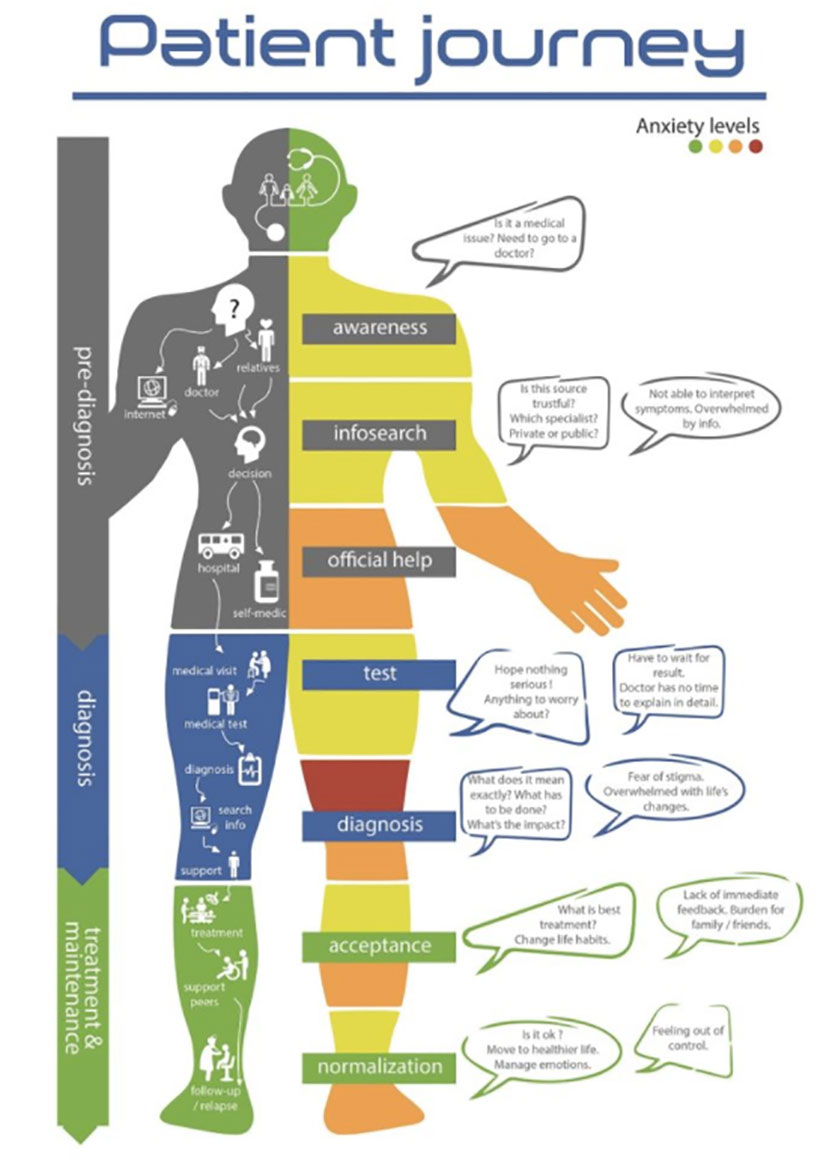
The patient journey in your practice reveals a lot about how patients experience your care and how they think and talk about you to others.
It’s important to chart or map your patient journey as well as to evaluate how a patient journey might differ based on condition.
The patient journey map will guide you regarding where and how to continually improve the patient experience in your practice.
Stay Tuned
This is the first article in a series on The 8 Most Important Marketing Strategies for a Healthcare Practice. Next installment coming soon.



Leave A Comment
You must be logged in to post a comment.